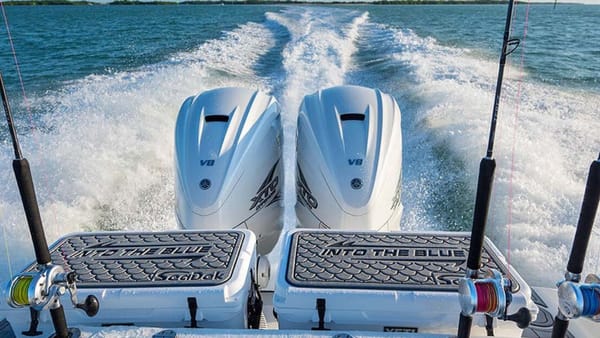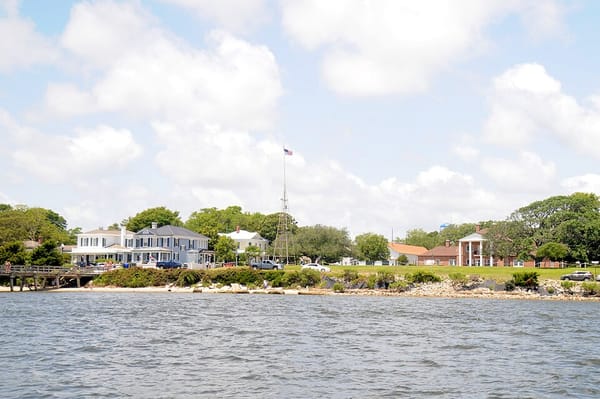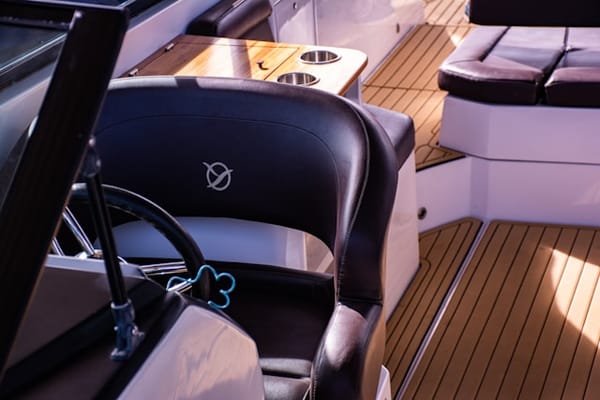The PierShare Guide to Marine Power

One of the most important elements of a rental dock is the available power. Boats of all sizes need access to electricity to do everything from charging batteries to running air conditioners. Because each boat requires a specific amount of electricity, it is important to accurately report power details in your PierShare listing. Determining the power available at your dock can be a daunting task, especially if you are not familiar with marine power.
Not to fret! We have developed this comprehensive guide to help you understand everything you need to know when it comes to marine power. And when it comes to pricing electricity, we’ve got you covered there too! Our streamlined electricity policies will help your rental experience go as seamlessly as possible.
Marine Power Basics
In order to understand what type of power you have available at your dock, it is important to understand what the options are. Generally, electrical outlets range from 15-100 amps. A standard household plug is 15-20 amps, while the plug for your washer and dryer is likely 30 amps. Generally, nothing larger than 30 amps is found in a US home. On boat docks, however, 50 and 100 amp plugs are common to support larger boats with greater power needs. Just like fuel efficiency in a car, electricity requirements for boats vary by make, model, and user activity. While there is no standard for electricity requirements by boat (or dock) size, the following are general guidelines for power needs based on boat size.
- Less than 32ft: 15-20 amp (household outlet), mostly for charging batteries or running air conditioners
- 32ft to 45ft: 30 amp
- 45ft to 65ft: 50 amp
- 65ft and up: 100 amp
Marine Power Specifics
Amperage is not the only consideration when documenting the power available at your space. You’ll also need to note the appropriate voltage. In general, the combinations are as follows

- 30 amp
- 110 volt 30 amp single
- 110 volt / 240 volt double 30 amp
- 50 amp
- 110 volt single 50 amp
- 240 volt single 50 amp
- 240 volt double 50 amp
- 100 amp
- 240 volt single 100 amp single phase (most common 100 amp plug)
- 240 volt single 100 amp three phase (generally only required by older boats over 100ft)
When posting your rental dock on PierShare, it is crucial to note not only the outlets you have available, but the number of outlets as well. Though your power configuration will determine which boats can dock at your space, there are several ways to work around mismatched electrical needs.
Accommodating Boats with Larger Electricity Needs
If you have several smaller outlets and would like to host a boat that requires more power, a Reverse Y Adapter can be used to combine power from two outlets into one. For example, if a boat requires 50 amps and you have two 30 amp plugs, you can use a Reverse Y Adapter to make 50 amps of current out of those two 30 amp plugs. These adapters generally cost around $350 but can be a great investment if you’d like to be able to host larger boats without any significant electrical work.
Accommodating Boats with Smaller Electricity Needs
If you have a situation in which you would like to host two smaller boats and have a larger power outlet (i.e., two boats requiring 30 amps each off a 50 amp plug), you can use a Y Adapter. Y Adapters take power from a larger plug and divide it into two smaller power supplies.
Accommodating Boats with Different Electricity Needs
If your dock does not have the appropriate electrical configuration for a particular boat, Pigtail Adapters may be the way to go. Pigtail Adapters connect two receptacles with different power configurations. Depending on the conversion, these adapters can range in price from $40 to $300. Many Boaters may already have Pigtail Adapters, but keeping a few on hand to help Boaters convert power can be an added bonus for your dock!
It is important to note that not all boats can use the above power adapters. Some boats may require a specific electrical configuration, whether because of manufacturer requirements or Boat Owner preference. For this reason, having a Power Pedestal can help you host as many boats as possible.
Enhancing Energy Offering with The Power Pedestal

If you have been to a marina or public dock, you may have noticed white little towers that boats were hooking up to. These are called Power Pedestals. Like single plugs, Power Pedestals come in all different shapes and sizes. If you have a Power Pedestal, you almost certainly have at least one 30 amp plug as well as a regular household outlet and fresh water, but it’s important to examine the specifics of your pedestal before posting your PierShare listing.
In order to tell what type of plugs your pedestal contains, take a look at the circuit breaker or plaque. Both of these should have the amperage and voltage for all plugs contained on the pedestal. If for any reason they do not, take a look at the plugs themselves. In small letters etched into the plug, you should see the electrical configuration of that plug.
Pedestals can add value to any dock because of the convenience they provide when it comes to electricity. They usually have a number of different plugs all located on one convenient tower so any boat can easily dock. In our experience, Dock Owners sometimes decide to install a pedestal to increase the value of their dock. The pedestal itself costs anywhere from $750 to $1,600 depending on the set up. If you don’t already have electricity at your dock, it can cost an additional $2,000 to $4,000 to run the wiring. This can be a somewhat substantial upfront investment but if it means more docked boats, it can quickly pay off!
Understanding Electric Cost Drivers
Now you may be wondering how much electricity a boat typically uses and what drives these costs higher. Like with electricity in a house, electrical usage varies greatly on the type and size of boat and on what auxiliary electric items are on the boat. In our experience, the vast majority of boats under 45ft use $40-$75/month of electricity. This starts to increase with large motor yachts (50ft+) which may be running several air conditioning units, using large generators, or maintaining vast electronic systems. In order to address these tricky pricing logistics, PierShare has developed streamlined electricity policies.
Streamlining the Process with PierShare’s Electricity Policies
PierShare’s electricity policies are here to take the guesswork out of charging boaters for electric.There are two options depending on the set-up at your dock.
Option 1: If you have a separate electric meter at your dock, simply report monthly electrical usage to PierShare. We will then charge monthly electricity fees to the card on file.
Option 2: If you do not have a separate electric meter at your dock, not to worry! We use the PierShare $100 Electricity Credit. This means that the first $100 of power usage is built into the price of the dock. So when pricing your dock, be sure to account for up to a $100 increase in your monthly electric bill. (For more information on pricing your dock, see our Pricing Guide). If your monthly electric bill rises more than $100 in any given month, you can simply send the previous month and current month electric bill to PierShare. We will then charge the Boat Owner for the additional electricity usage above the $100 level already included. It’s as simple as that!
Now that you understand the ins and outs of marine power, be sure to list your dock or slip for rent on PierShare today!



